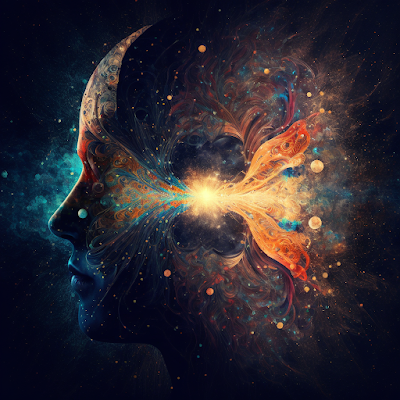The imbalance of matter and antimatter: Why is there more matter than antimatter?
Introduction
The universe
is made up of matter, and while antimatter exists, it is significantly less
abundant. This imbalance raises the fundamental question of why there is more
matter than antimatter in the universe. In this blog post, we will explore some
of the leading theories and explanations for the matter-antimatter asymmetry.
Baryogenesis
One possible
explanation for the matter-antimatter asymmetry is known as baryogenesis. This
theory suggests that during the early universe, a small imbalance of matter
over antimatter was created through a process called baryon number violation.
This violation allowed for the creation of more matter than antimatter, leading
to the observed asymmetry.
CP-Violation
Another
explanation for the matter-antimatter asymmetry is the presence of
CP-violation. CP-violation is a violation of a symmetry known as charge-parity
symmetry. In the early universe, matter and antimatter were produced and
destroyed in equal amounts. However, if there is a slight difference in the
behavior of matter and antimatter, this could have led to a slight imbalance in
their production, resulting in more matter than antimatter.
Beyond the Standard Model
Theories
beyond the Standard Model of physics, such as supersymmetry and grand
unification theories, also predict the existence of baryon number violation and
CP-violation. These theories provide further support for the explanations of
the matter-antimatter asymmetry.
Experiments
Experiments
such as the BaBar experiment at SLAC National Accelerator Laboratory and the
Belle experiment at KEK in Japan have been searching for evidence of
CP-violation in the behavior of particles called B-mesons. The discovery of
CP-violation in these experiments could provide further insight into the
matter-antimatter asymmetry.
Leptogenesis
Another
possible explanation is called leptogenesis, which posits that the
matter-antimatter asymmetry was generated through the decays of heavy,
short-lived particles called leptons. These decays would have created a surplus
of matter over antimatter, leading to the observed asymmetry in the universe.
Conclusion
The search
for a definitive explanation for the matter-antimatter asymmetry continues to
be an active area of research in physics and cosmology. The discovery of a
mechanism for baryogenesis or CP-violation would have major implications for
our understanding of the universe, and could also have implications for other
areas of physics such as the search for dark matter. In summary, the leading
explanations for the matter-antimatter asymmetry include baryogenesis,
CP-violation, and leptogenesis, and the scientific community continues to
explore these theories to unravel the mysteries of the universe.













Comments
Post a Comment